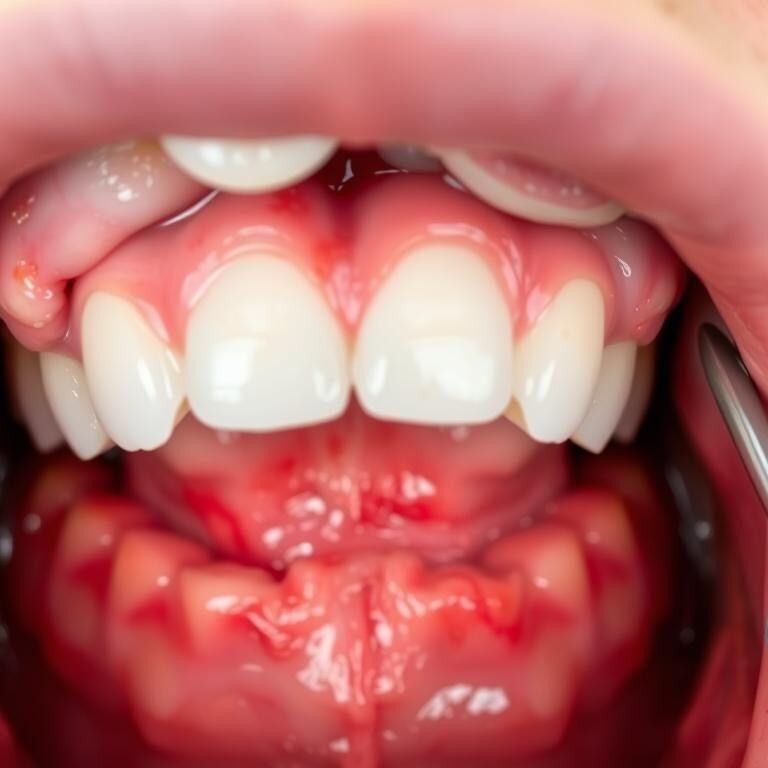Table of Contents
Researching Dentists with Experience in Treating Anxious Patients
When it comes to managing dental anxiety, finding a dentist with experience in treating anxious patients can make a significant difference in your dental experience. Researching dentists who specialize in helping individuals with dental anxiety is a crucial step in finding the right dental professional for your needs.
One way to begin your search is by asking for recommendations from friends, family, or your primary care physician. These individuals may have personal experiences or knowledge of dentists who have a gentle and compassionate approach to treating anxious patients. Additionally, reading online reviews can provide valuable insights into the experiences of other patients who have dealt with dental anxiety. Look for dentists who not only have positive reviews but also specific mentions of their ability to help anxious patients feel comfortable.

Reading Reviews and Asking for Recommendations
When it comes to finding a dentist who specializes in treating anxious patients, reading reviews and asking for recommendations can be incredibly helpful. Reviews provide valuable insights into the experiences of other patients, allowing you to gauge the level of care and comfort provided by a specific dentist. Look for reviews that specifically mention the dentist’s ability to alleviate anxiety and create a calming environment.
In addition to reading reviews, it’s also a good idea to ask for recommendations from friends, family, or healthcare professionals. They may have had personal experiences with dentists who are skilled in treating anxious patients and can provide valuable firsthand insights. Getting recommendations from trusted sources can give you peace of mind and help you narrow down your search for a dentist who can meet your specific needs.
Scheduling a Consultation to Discuss Your Concerns
When it comes to managing dental anxiety, scheduling a consultation with your dentist to discuss your concerns is an important step towards finding a solution. During this appointment, you will have the opportunity to openly communicate your fears and anxieties, allowing your dentist to understand your specific needs and tailor a treatment plan accordingly. The consultation is also a chance for you to ask any questions you may have about the dental procedures or techniques that can help alleviate your anxiety.
During the consultation, it is important to be honest and transparent about your fears and concerns. This will allow your dentist to develop a personalized approach to your treatment that takes your anxiety into consideration. By openly discussing your apprehensions, you and your dentist can work together to create a supportive and comforting environment that will help ease your anxiety during future dental visits. Remember, your dentist is there to help you feel more at ease, so don’t hesitate to express your concerns and ask for their guidance and expertise in managing dental anxiety.
| Step Number | Step Description | Details |
|---|---|---|
| 1 | Identify your concerns | Write down what issues or questions you have |
| 2 | Research potential consultants | Look for professionals who specialize in your area |
| 3 | Check availability | Determine when you are available for a consultation |
| 4 | Contact consultants | Reach out via email or phone to inquire about availability and services offered |
| 5 | Schedule consultation | Set a date and time for the consultation |
| 6 | Confirm appointment | Double-check the appointment details |
| 7 | Prepare for the consultation | Gather any relevant documents or information |
| 8 | Attend the consultation | Be on time and ready to discuss your concerns |
| 9 | Follow-up if necessary | Take any recommended next steps or follow-up actions |
Ensuring the Dental Office Atmosphere is Comforting and Calming
Creating a comforting and calming atmosphere in the dental office is essential for patients with dental anxiety. The physical environment plays a significant role in reducing stress and promoting relaxation. Dental offices should strive to have a welcoming and soothing ambiance to help patients feel more at ease during their visits.
One way to ensure a comforting atmosphere is through the use of warm and neutral colors on the walls and furnishings. Soft lighting and calming artwork can also contribute to creating a tranquil environment. Additionally, playing calming music in the waiting area can help to relax patients before their appointment.
Furthermore, the arrangement of furniture and the use of comfortable seating can significantly impact a patient’s experience. Dental offices can provide plush chairs and cozy blankets to make patients feel more comfortable and at home. The use of essential oils with relaxing scents, such as lavender or chamomile, can also help to create a soothing atmosphere. Overall, by paying attention to the physical surroundings, dental offices can help to alleviate anxiety and promote a sense of calm for their patients.
Strategies for Creating a Supportive Environment
Creating a supportive environment is crucial for patients who experience dental anxiety. One strategy is to bring a trusted friend or family member to the appointment. Having someone you trust by your side can help provide comfort and reassurance throughout the visit.
Listening to calming music or podcasts during the visit is another effective strategy. Studies have shown that soothing music can reduce anxiety and promote relaxation. By bringing headphones and a playlist of your favorite calming tunes or podcasts, you can create a more comforting atmosphere for yourself during the dental procedure.
Using distraction techniques like deep breathing or visualization can also be beneficial. Deep breathing exercises help calm the nervous system and promote a sense of relaxation. Visualization involves imagining yourself in a calm and peaceful place while undergoing the dental procedure, which can help shift your focus away from any anxiety or discomfort.
| Strategy | Description |
|---|---|
| Effective Communication | Encourage open communication between staff and patients to address concerns and build trust. |
| Empathy and Compassion | Train staff to empathize with patients’ fears and concerns, creating a caring atmosphere. |
| Comfortable Waiting Area | Provide a welcoming and comfortable waiting area with amenities to reduce anxiety. |
| Patient Education | Offer informative materials and discussions to empower patients and alleviate anxieties. |
| Flexible Scheduling | Accommodate patient schedules and needs to reduce stress and improve convenience. |
| Pain Management | Utilize effective pain management techniques to minimize discomfort during procedures. |
| Follow-up Care and Support | Provide post-procedure support and follow-up to ensure patients feel cared for. |
| Staff Training and Development | Continuously train staff to enhance communication skills and empathetic patient care. |
| Positive Reinforcement | Recognize and reward staff for creating a supportive and positive environment. |
| Collaborative Approach | Foster a team-oriented atmosphere where staff work together to provide comprehensive care. |
Additionally, requesting additional comfort measures such as blankets or pillows can make a significant difference. Feeling physically comfortable during the appointment can help alleviate anxiety and create a more positive experience. Dentists are often willing to provide these amenities to enhance patient comfort, so don’t hesitate to ask.
Bringing a Trusted Friend or Family Member to Your Appointment
Bringing a trusted friend or family member to your dental appointment can be a helpful strategy for managing anxiety and increasing your comfort level. Having someone you trust by your side can provide emotional support and reassurance throughout the visit. They can act as a calming presence and offer encouragement when needed.
Moreover, a trusted companion can also be an advocate for your concerns and help you communicate with the dentist. They can help you articulate your anxieties and ensure that your questions and worries are addressed during the appointment. Additionally, they can take notes on the dentist’s recommendations and instructions, ensuring that you have accurate information to refer to later.
It’s important to choose someone who understands your anxiety and can provide a calm and supportive presence. Whether it’s a close friend, a family member, or a significant other, their presence can make a significant difference in your overall dental experience.
Listening to Calming Music or Podcasts during the Visit
Listening to calming music or podcasts during your dental visit can be an effective strategy for managing anxiety and promoting relaxation. Research has shown that listening to calming music has a positive impact on reducing stress levels, helping patients feel more at ease during dental procedures. The soothing melodies and rhythms can help distract your mind from the dental environment, allowing you to focus on the music instead of your anxious thoughts.
Podcasts, on the other hand, offer the opportunity to engage your mind in an interesting and informative conversation while receiving dental treatment. Choosing podcasts that cover topics you enjoy can divert your attention away from the dental procedures, making the experience more pleasant. Additionally, educational podcasts that discuss dental health or oral care can provide you with valuable knowledge and insights, empowering you to take better care of your oral health.

When selecting music or podcasts, it is essential to choose content that promotes relaxation and a positive atmosphere. Opt for instrumental music or genres known for their calming qualities, such as classical or ambient music. Similarly, choose podcasts with soothing voices and topics that interest you, avoiding subjects that may increase your anxiety. Discuss your choice with your dentist, who can guide you on the best options for creating a soothing and enjoyable dental experience.
Using Distraction Techniques like Deep Breathing or Visualization
Deep breathing and visualization are effective distraction techniques that can help alleviate dental anxiety during your visit. When you feel your anxiety levels rising, take slow, deep breaths in through your nose and exhale through your mouth. This technique can help slow down your heart rate, relax your muscles, and promote a sense of calmness.
Visualization is another powerful technique that involves imagining yourself in a peaceful and relaxing environment. Close your eyes and visualize a serene place, like a beach or a mountain retreat. Focus on the details of the scene, such as the sound of the waves or the smell of the crisp mountain air. By engaging your senses and immersing yourself in this calming visualization, you can redirect your thoughts away from the dental procedure and reduce your anxiety levels.
Requesting Additional Comfort Measures such as Blankets or Pillows
During a dental appointment, it’s important to feel as comfortable as possible. One way to achieve this is by requesting additional comfort measures, such as blankets or pillows. These simple items can help create a more relaxing environment and can make a significant difference in reducing anxiety.
Blankets provide a sense of coziness and warmth, helping patients feel more at ease during their dental procedure. Many dental offices offer blankets that are specifically designed for patients, ensuring both comfort and hygiene. Similarly, pillows can be provided to support a patient’s head and neck, promoting relaxation and reducing tension. By requesting these comfort measures, patients can enhance their overall experience and ease any feelings of anxiety that may arise.

Strategies for Managing Dental Anxiety during the Visit
The experience of visiting the dentist can be particularly challenging for individuals with dental anxiety. However, there are various strategies that can help manage anxiety during the visit. One approach is the use of nitrous oxide or oral sedation, which can be recommended by your dentist to help you relax. These methods can alleviate anxiety and make the dental procedure more comfortable for you. It is important to consult with your dentist to determine the most appropriate option for your specific needs.
In addition to sedation techniques, practicing mindfulness and positive self-talk can be effective in managing dental anxiety. By focusing on the present moment and replacing negative thoughts with positive affirmations, you can shift your mindset and reduce anxiety. It may also be helpful to utilize stress-reduction techniques during the procedure, such as deep breathing or visualization exercises. These techniques can promote relaxation and help you feel more at ease throughout the dental visit. Remember, open communication with your dentist is vital during the procedure, allowing you to take breaks or express any concerns that may arise.
Using Nitrous Oxide or Oral Sedation if Recommended by Your Dentist
Nitrous oxide and oral sedation are two options that may be recommended by your dentist to help manage dental anxiety during your visit. Nitrous oxide, also known as laughing gas, is a safe and commonly used form of sedation that is inhaled through a mask placed over your nose. It induces a state of relaxation and helps to reduce anxiety and discomfort during dental procedures.
Oral sedation involves taking a prescribed medication prior to your appointment to help relax and calm your nerves. This type of sedation is usually in the form of a pill or liquid that is taken orally. It can provide a deeper level of relaxation compared to nitrous oxide and is particularly beneficial for individuals with moderate to severe dental anxiety. Your dentist will carefully assess your individual needs and determine which option is best for you.
Both nitrous oxide and oral sedation are administered under the supervision of a trained dental professional to ensure your safety and comfort throughout the procedure. It is important to discuss your concerns and preferences with your dentist so that they can recommend the most appropriate sedation option for you.
Practicing Mindfulness and Positive Self-Talk
Practicing mindfulness and positive self-talk can be powerful tools for managing dental anxiety and creating a more positive dental experience. Mindfulness involves focusing your attention on the present moment, accepting any anxious thoughts or feelings without judgment, and purposefully redirecting your focus to your breathing or sensations in your body. This can help to calm your nervous system and reduce feelings of stress or fear. When practicing mindfulness during a dental visit, you can try to bring your attention to the sensations of the dental procedure, such as the sound of the dental tools or the feeling of the dentist’s hands. By staying present and aware of these sensations, you may find that the procedure becomes less overwhelming and more manageable.
Positive self-talk involves using encouraging and reassuring statements to counteract negative thoughts or beliefs about dental treatment. Instead of telling yourself “I can’t handle this” or “It’s going to be painful,” you can replace those thoughts with statements like “I am strong and capable,” “I have successfully managed dental procedures before,” or “I am in control of my anxiety.” By consciously choosing and repeating positive affirmations, you can shift your mindset and build confidence in your ability to face dental treatment with resilience and strength. Remember that your thoughts have a powerful influence on your emotions and actions, so practicing positive self-talk can have a transformative impact on your dental anxiety.
Utilizing Stress-Reduction Techniques during the Procedure
During a dental procedure, it is important to utilize stress-reduction techniques to help manage anxiety and promote a more comfortable experience for the patient. One effective technique is deep breathing. Taking slow, deep breaths can help calm the nervous system and reduce feelings of tension. Focusing on the breath can also redirect the mind away from anxious thoughts and towards a more relaxed state.
Another stress-reduction technique is visualization. This involves creating a mental image of a peaceful or calming scene, such as a beach or a forest. By picturing oneself in a tranquil environment, it can help distract from any discomfort or anxiety during the procedure. Visualization can be enhanced by engaging other senses, such as imagining the sound of ocean waves or the smell of fresh flowers.
Taking Breaks and Communicating with Your Dentist if Needed
Taking breaks and communicating with your dentist if needed is an important strategy for managing dental anxiety during your visit. If you feel overwhelmed or overly anxious during a procedure, don’t hesitate to inform your dentist. They are there to support you and can provide you with the opportunity to take a break if necessary. By communicating openly with your dentist about your comfort levels, they can make adjustments to ensure you feel at ease throughout the appointment.
During your break, you can take a few moments to relax and gather yourself before continuing. You may find it helpful to practice deep breathing exercises or engage in visualization techniques to calm your mind and body. Additionally, your dentist may offer you the option to listen to calming music or podcasts during the visit, which can distract you from any discomfort or anxiety you may be experiencing. Remember, open communication is key to a successful dental visit, and taking breaks when needed can help alleviate any anxiety you may have.
Strategies for Post-Visit Reflection and Encouragement
After completing a dental appointment, it is important to take some time for post-visit reflection and encouragement. Reflecting on the experience can help you acknowledge your bravery in facing dental anxiety and recognize the progress you have made. Take a few moments to appreciate the steps you took to navigate through your fears and overcome them.
Offer yourself encouragement and positivity for seeking out professional dental care and taking control of your oral health. Remind yourself that you have taken an important step towards maintaining a healthy smile, and that you are moving forward on the path to improved dental well-being. Remember, each dental visit is a step closer to overcoming your dental anxiety and achieving optimal oral health.
By taking the time to reflect and offer yourself encouragement, you are strengthening your mindset and building resilience. This will help you approach future dental visits with a sense of confidence and readiness to face any challenges that may arise. Remember, you are not alone in your journey, and with each successful visit, you are one step closer to a healthier and happier smile.
Celebrating
After successfully managing your dental anxiety and completing your dental appointment, it is important to take a moment to celebrate your accomplishments. Overcoming dental anxiety is no small feat, and you should be proud of yourself for taking the necessary steps to prioritize your oral health.
Celebrating your success can take many forms. It could involve treating yourself to a small reward, such as a favorite dessert or a relaxing activity that brings you joy. It could also be as simple as acknowledging and congratulating yourself for facing your fears and making it through the dental appointment. Remember, each step forward in managing your dental anxiety is a step towards better oral health and overall well-being.
How can I find a dentist who specializes in treating anxious patients?
One way to find a dentist with experience in treating anxious patients is by researching dentists in your area and looking for those who specifically mention anxiety management in their practice. You can also ask for recommendations from friends, family, or your primary care physician.
What are some signs that a dental office atmosphere is comforting and calming?
A comforting and calming dental office may have features such as soft lighting, soothing music, comfortable furniture, and a welcoming reception area. Additionally, the staff should be friendly, understanding, and attentive to your needs.
What comfort measures can I request during my dental visit?
You can request additional comfort measures such as blankets or pillows to make you feel more relaxed during your dental visit. Informing your dentist about your concerns and anxieties can help them provide the necessary support and accommodations.
What is nitrous oxide and how can it help with dental anxiety?
Nitrous oxide, also known as laughing gas, is a safe and effective sedation option commonly used in dental procedures. It can help to reduce anxiety and promote relaxation during the visit. Your dentist can discuss whether nitrous oxide is an appropriate option for you.
How can I practice mindfulness and positive self-talk to manage dental anxiety?
Mindfulness involves focusing your attention on the present moment and calmly acknowledging and accepting your thoughts and feelings. Positive self-talk involves using encouraging and reassuring statements to counteract negative thoughts. These techniques can help you stay calm and relaxed during your dental visit.
What should I do if I need a break or feel overwhelmed during the dental procedure?
It’s important to communicate with your dentist if you need a break or feel overwhelmed during the procedure. They can pause and give you a moment to relax and regroup. Open and honest communication with your dentist is key in managing dental anxiety.
How can I celebrate and encourage myself after a dental visit?
After your dental visit, you can celebrate your accomplishments by treating yourself to something enjoyable, such as a favorite meal or activity. You can also reflect on the positive aspects of the experience and remind yourself that you took an important step towards maintaining your oral health.












